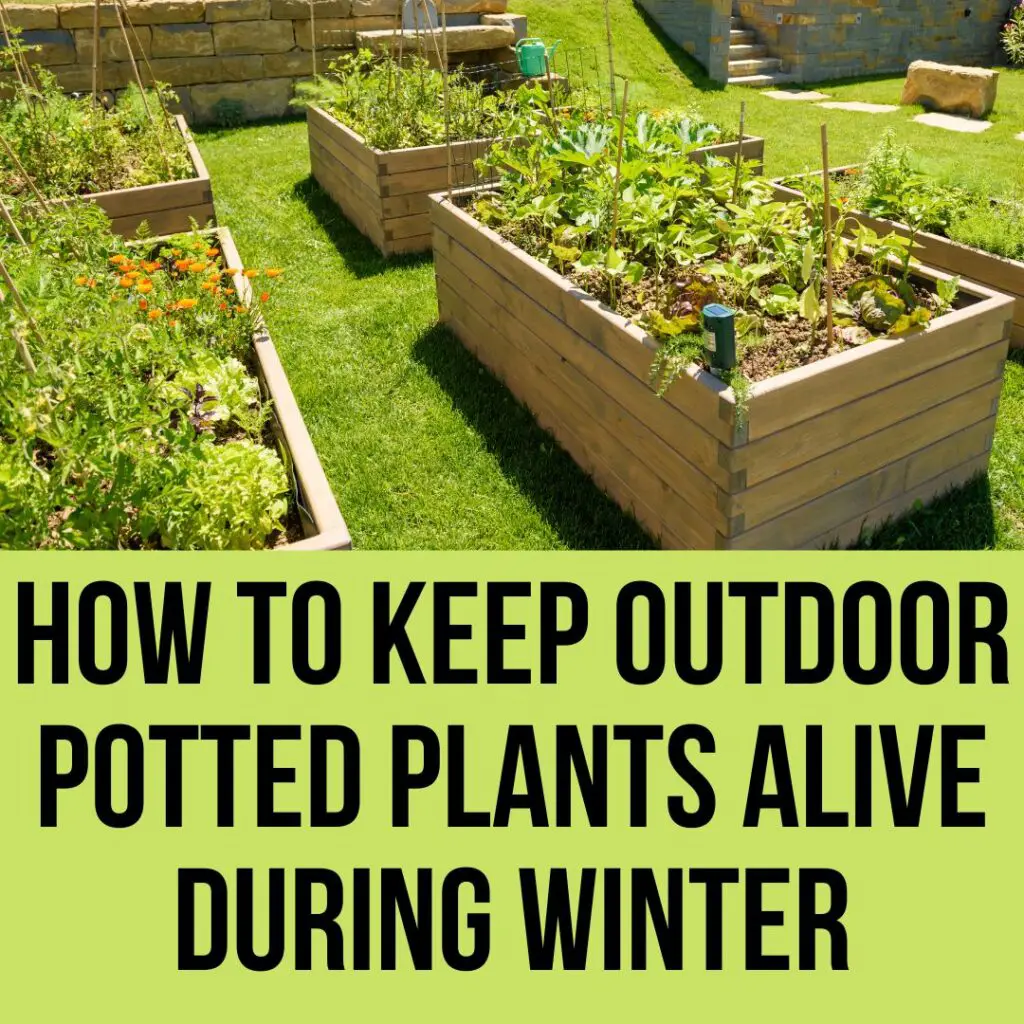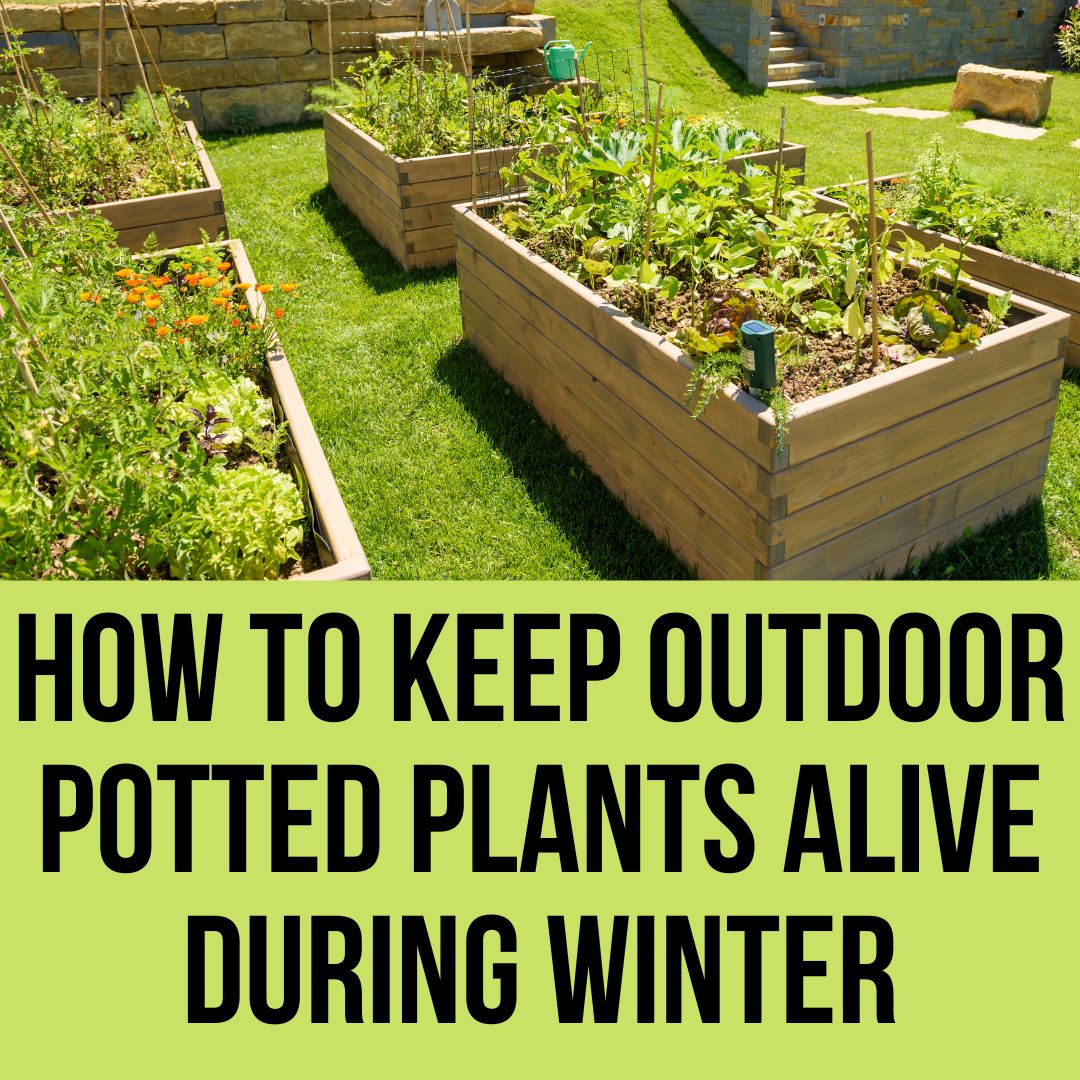If the primary concern in summer is about constant watering, in winter the main concerns are to protect the plants from frost and maintain the well-being of the lawn. Many plants enter the so-called vegetative rest but must be helped with some tricks for a luxuriant awakening in spring. During the winter it is essential to protect the plants from the cold and above all from frost, rain, and hail.
Now, without further ado, let me tell you exactly how to keep alive outdoor potted plants in winter.
With the arrival of the cold in autumn and throughout the winter, it is essential to protect the plants grown in the garden or on the balcony of the house to protect them from frost, rain, and hail. Particular attention should be paid to the more delicate ones including succulents, especially in areas where low temperatures are maintained for quite prolonged periods.
How To Keep Alive Outdoor Potted Plants In Winter?

Here are some suggestions of our nurserymen valid for those who have a garden with a green lawn or potted plants on the balcony:
Fertilize the soil
It may be necessary to help the plants by adding fertilizers rich in nutrients; in this sense, peat and mulch around the most delicate plants are also very useful to protect them from sudden changes in temperature and frosts.
For the nourishment of the lawn, a slow-release fertilizer rich in potassium is better, a very important element to help the lawn to strengthen and overcome the winter stress caused by the cold. In winter, avoid iron-based fertilizers or fertilizers with a high nitrogen content as they have a greening capacity and/or stimulate the vegetative phases causing damage
Prune plants and trees in late winter
You can prune ornamental plants and trees towards the end of winter, just before the start of the new life cycle, to shape their appearance, giving the plant the structure that best reflects your taste or needs.
Keep your lawn clean
The deposit of leaves or plant residues on the lawn compromises its health and beauty. This bad habit prevents the lawn from absorbing light and creates moisture inside it, a breeding ground for fungal diseases that damage it, especially in winter. For this, you need to clean the lawn of foliage with a wide-toothed rake or use mechanical blowers/vacuums.
Mow the lawn regularly
Even in winter, the lawn must be regularly cut, less frequently but it cannot be avoided,. It is important to perform the cut on mild and dry days. Remember: never mow the lawn on humid days or in the presence of frost!
Pay attention to the watering of the plants
shallow watering on the lawn and the plants is not necessary as the winter rains will take care of it for you, but if the soil is dry, emergency irrigation must still be done with very small quantities of water. Also, pay close attention to water stagnation: they are the first cause of damage to the lawn and the death of plants, especially those grown in winter
Choose well the varieties of plants and flowers
If you are looking for flowering plants that give a little color to the cold and dark winter days, you cannot fail to buy cyclamen, pansé (pansies), and heather.
- The cyclamen is a plant to grow in a pot ideal to keep outside during the winter, it produces abundant blooms available in many shades.
- The pansy or pansies is a balcony or garden plant that in winter gives a lot of satisfaction without much effort. Resistant to frost (even snow), grow it on the terrace of the house or in the garden to create splashes of color having the only attention to expose it to full sun and throughout the winter until spring you can enjoy its colorful flowers.
- Heather can be cultivated for the beauty of its white or purple flowers or for its foliage, which in some varieties is colored with red, yellow, or orange tones. It lends itself very well as a small border plant in the garden or simply as a pot plant.
If, on the other hand, you are looking for evergreen outdoor plants that do not fear winter weather, there are numerous plants to choose from. Boxwood, pyracantha, holly, nandina, skimmia, rhododendron, camellia, loropetalum, and aucuba are just some of the many species that are well suited to harsh climates.
If you cannot bring the plants indoors, keep them in the garden or on the balcony but protect them by sprinkling the external roots with small pieces of wood, straw, or dry leaves. For greater coverage of the plants also wrap the pot with a jute bag. Alternatively, wrap the jar in a newspaper.

tips to keep alive outdoor potted plants in winter
- The simplest solution is to move the plants indoors during frigid days: place them in a sunny place, possibly near the windows, to allow the plants to take advantage of the sunlight.
- Avoid placing plants near heat sources such as fireplaces, radiators, or stoves as they are very affected by the dryness of the air.
- If they are resistant plants, protect them from the cold by covering them with a transparent cloth that can also let the sun’s rays through. Also, remember to keep openings to facilitate the exchange of air and avoid the formation of mold.
- Instead, to protect the soil, opt for mulching, i.e. a cover made using materials of natural origin such as hay, pruning residues, or dry leaves.
- As for watering, avoid stagnation in saucers that could freeze the plant.
